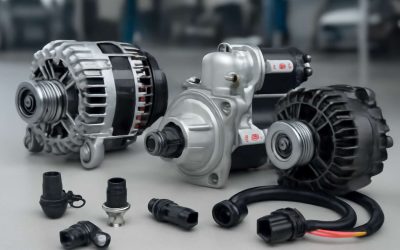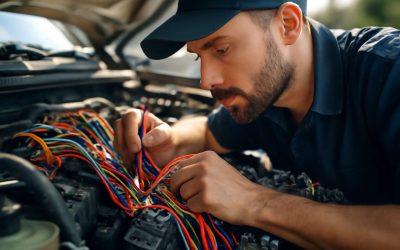The automotive electrical system powers the lights, radios, heater, windshield wipers and other components in a vehicle. This complicated network requires an understanding of current and voltage to function properly. The basic skills required to become an auto electrician can be learned at a trade school, but there are many specific aspects of this field that require specialized training and experience.
The most important components of the automotive electrical system are the battery, alternator and wiring harness. The alternator generates the power that runs the electrical systems and charges the battery when the car is running. The battery is responsible for starting the engine and supplying electricity to non-engine systems, such as the lights.
All electrical circuits must have a ground. This is why the negative lead from the battery connects directly to the metal chassis of the car. Without a ground there is only potential current that can flow and nothing will work. The battery also supplies energy to the system when the car is running but not accelerating, and it replenishes its charge by drawing power from the engine.
Electricity flows down wires of different colors and resistance and these are bundled together and run the length of the vehicle in what is known as the wiring harness or writing loom. It is very important not to try and touch any wires that are connected to the battery or anywhere close by. It is possible to arc the battery current through your body and you should only attempt to work on electrical systems if you are comfortable with the knowledge and equipment that is required to do so safely.
One of the most common problems that an automotive electrical technician will encounter is a short or open circuit. A short circuit happens when a component has been rubbed through to the point where it will cause damage and usually results in a fuse blowing. This is easily fixed by wrapping the damaged wire with electrical tape or replacing it. An open circuit is more serious and can be caused by severe corrosion inside an electrical connector or a broken wire that prevents current from flowing through it.
When working on electrical circuits it is a good idea to use a multimeter to measure the voltage drop across a component to see if there is an excessive amount of resistance in the circuit. Measuring the voltage drop is more accurate than using a test light or simple resistance gauge and will help identify issues that might be difficult to spot with these methods.
An electrical circuit that is not functioning correctly should be inspected by a qualified automotive electrician as soon as possible. If not fixed promptly these problems could damage other systems in the vehicle and potentially put your safety at risk on the road. Contact Sant Automotive today to book an electrical inspection. Our experienced technicians will ensure your electrical system is functioning at maximum efficiency.



0 Comments